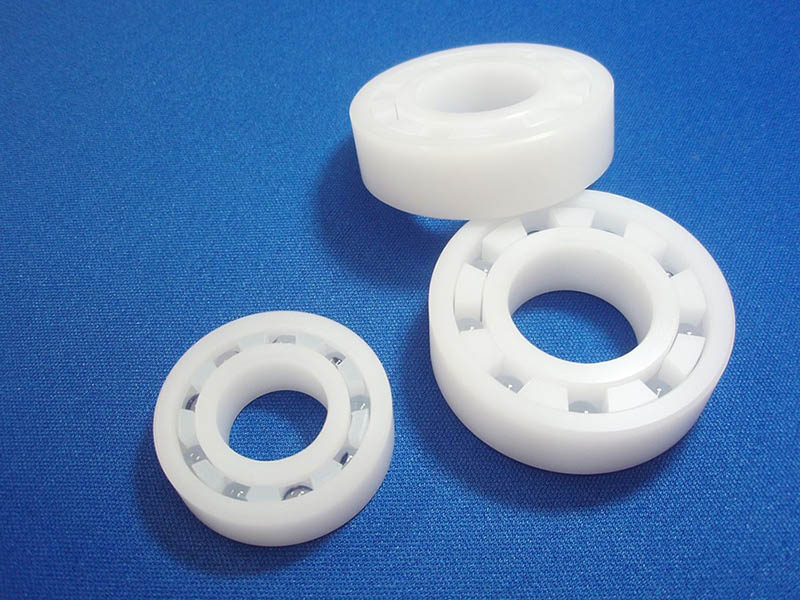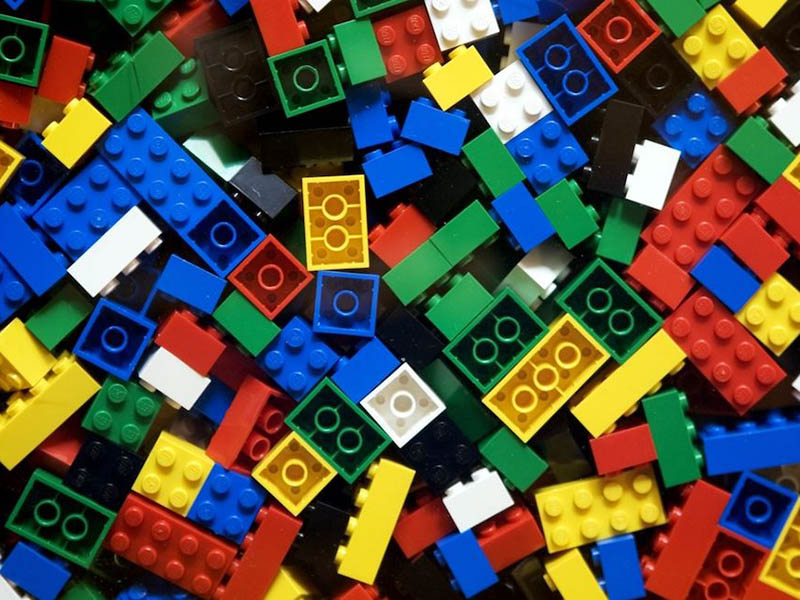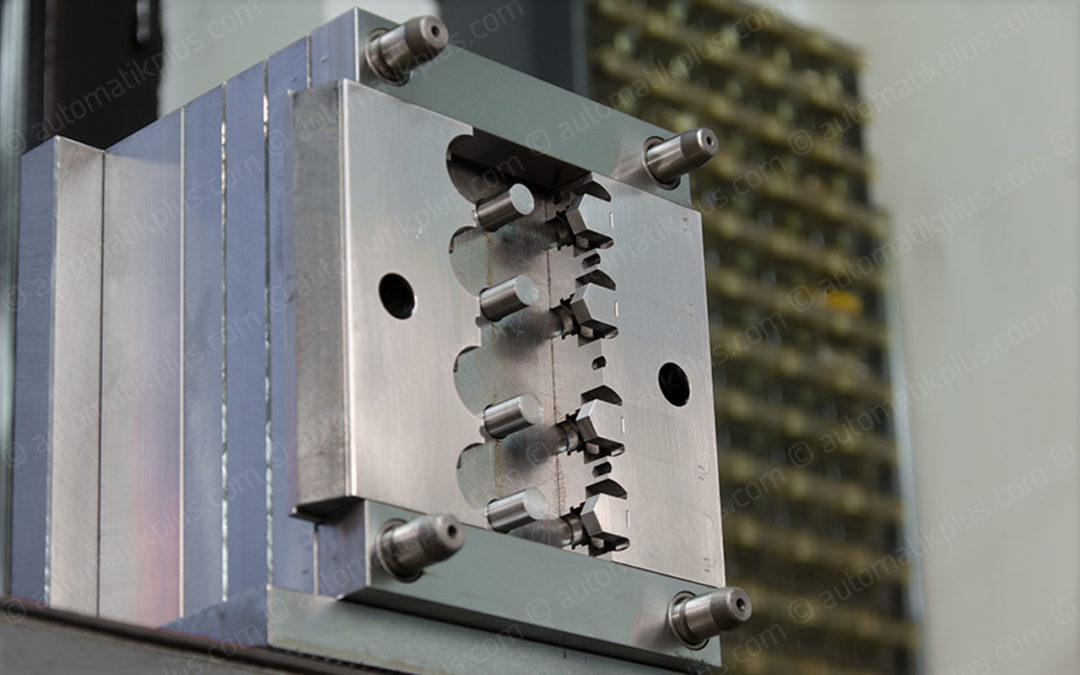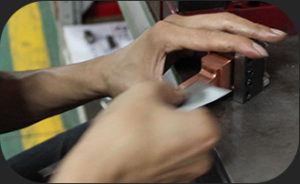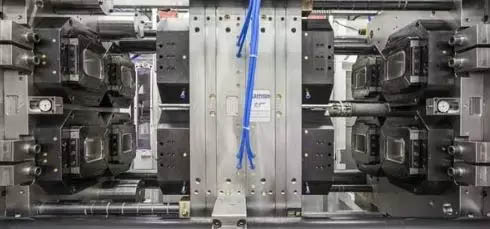Warpage deformation refers to the distortion of the shape of the injection molded article and the warpage, which deviates from the shape accuracy requirement of the workpiece. It is one of the most difficult product defects that are common in injection mold design and injection production.
With the development of the plastics industry, especially the development of the electronic industry, the requirements for the appearance and performance of plastic products are getting higher and higher. Such as notebooks and mobile phones, warping deformation has been one of the important indicators to assess product quality. It is hoped that the cause of warpage of plastic parts can be predicted in the design stage, in order to optimize the design, reduce the warpage of the product, and meet the precision requirements of product design.
1. Causes of warpage deformation
Warpage deformation is caused by uneven stress and shrinkage during the injection process. Poor mold release, insufficient cooling, shape and strength of the parts unsuitable, mold design and poor process parameters setting make the plastic parts loose shape.
- The mold temperature is not uniform, and the internal temperature of the plastic parts is not uniform.
- The difference in wall thickness of the plastic part and uneven cooling result in a difference in shrinkage.
- The plastic part has a thick condensing pressure difference and a cooling speed difference.
- When the plastic parts are ejected, the temperature is too high or the ejection force is uneven.
- Plastic parts are improperly shaped and have a curved or asymmetrical shape.
- The mold has poor precision and the positioning is unreliable, which makes the plastic parts easy to warp and deform.
- The position of the gate is improper, the injection process parameters are not good, the shrinkage direction is obvious, and the shrinkage is uneven.
- The difference in molecular chain orientation between the flow direction and the flow direction is different, resulting in different shrinkage rates.
- The wall thickness of the convex and concave molds is asymmetrically cooled, the cooling time is insufficient, and the cooling is improper after demolding.
2. Influence of mold structure on warpage deformation of injection molded parts
In terms of mold design, there are three main factors affecting the warping deformation of plastic parts, namely the filling system, the cooling system and the ejection system.
The injection mold gate is a key part of the entire casting system. Its position, form and number of gates directly affect the filling state of the melt in the mold cavity, resulting in plastic curing, shrinkage and internal stress variations. Common types of gates include edge gate, point gate, sub gate, direct gate, fan gate, and film gate.
The gate location should be chosen to minimize the flow of plastic. The longer the flow distance, the greater the flow difference between the inner fluid layer and the outer freezing layer, so that the greater the internal stress caused by the flow and the feeding between the frozen layer and the central fluid layer, the plastic deformation also increases;
On the contrary, the shorter the flow distance, the shorter the flow time from the gate to the flow end of the workpiece, the thickness of the frozen layer is reduced when the mold is filled, the internal stress is lowered, and the warpage deformation is also reduced.
For example, if a thin-walled large plastic part is used with only one center gate or side gate, since the radial shrinkage rate is greater than the circumferential shrinkage rate, the molded plastic part will have a large distortion; if multiple points are used instead, it can effectively prevent warpage and deformation.
When using point gate molding, also due to the anisotropy of plastic shrinkage, the position and number of gates have a great influence on the degree of deformation of the plastic parts.
The test of the number of different box-shaped plastic parts in different gates:
Using 15% glass fiber reinforced PA66, the weight 1450g plastic parts, there are many reinforcing ribs along the flow direction of the surrounding wall. Use basically the same process parameters. Gate method: (a) direct sprue, (b) 5 to 4 gates, (c) 9 to 8 gates. According to the test results, the gate number according to (b) has the best effect and meets the design requirements. The gate designed according to (c) is worse than the direct sprue, and the amount of warpage deformation exceeds the design requirement of 3.6~5.2mm.
The multi-gate can shorten the flow ratio (L/t) of the plastic, thereby making the density and shrinkage of the melt in the mold more uniform. At the same time, the plastic part can fill the cavity under a small injection pressure, reduce the molecular orientation tendency of the plastic, reduce the internal stress, and reduce the deformation of the plastic part.
During the injection process, the unevenness of the cooling rate of the plastic part will also form the unevenness of the shrinkage of the plastic part, and the difference in the shrinkage causes the bending generated plastic part to warp.
For example, if the temperature difference of the mold cavity and the core of the large flat plastic part is large, the melt of the cold mold cavity surface will cool down quickly, and the material close to the surface of the core will continue to shrink. The shrinkage will not continue Evenly and warp the plastic parts. Therefore, the cooling system design of the injection mold should strictly control the temperature balance of the core and the cavity.
For precision flat plastic shell parts, the material with large shrinkage and easy deformation is tested. The production test shows that the temperature difference should not exceed 5°C.
After the distance from the pipe wall to the surface of the cavity is determined, the distance between the cooling water holes should be as small as possible. If necessary, the arrangement of uneven water density should be adopted, that is, the cooling water holes are densely packed at a high temperature, and the material temperature is low. The cooling water hole rows are sparse to maintain the cooling rate substantially the same. At the same time, since the temperature of the cooling medium rises as the length of the cooling water channel increases, the length of the water passage of the cooling circuit should not be too long.
- Ejection mechanism design
The design of the ejection mechanism also directly affects the deformation of the plastic part. If the ejector mechanism is unbalanced, the deformation of the ejection force is caused to deform the plastic part. Therefore, it is necessary to balance the demolding resistance when designing the ejection mechanism. The cross-sectional area of the ram should not be too small to prevent the deformation of the plastic part per unit area due to excessive force.
The ejector should be placed as close as possible to the part with large draft. For precision flat plastic case parts, add as many ejector pins as possible to reduce the deformation of the plastic parts, and a composite release mechanism combining the ejector release and the pusher plate release.
When using soft plastic to produce large-scale deep-cavity thin-walled plastic parts, the mold release resistance is large and the material is soft. If the mechanical ejection method is completely adopted, the plastic parts will be deformed. Combined or gas (liquid) pressure combined with mechanical ejection will be more effective.
3. filling speed, pressure and warping deformation
The molten plastic is filled into the mold cavity under the action of the injection pressure and cooled and solidified in the cavity. In this process, the temperature, pressure and speed are coupled to each other, which has a great influence on the quality of the plastic parts.
Higher pressures and flow rates produce high shear stresses, causing differences in molecular orientation parallel to the flow direction and perpendicular to the flow direction, resulting in greater internal stresses in the plastic part. The influence of temperature on warpage deformation is mainly reflected in the following aspects:
The temperature difference between the inner and outer surfaces of the plastic part causes thermal stress and thermal deformation;
The temperature difference between different areas of the plastic part causes uneven shrinkage;
Different temperature conditions can affect the shrinkage of plastic parts.
Therefore, strict control of appropriate injection process parameters is an important means to reduce warpage.
4. The shrinkage and warping deformation of the parts
The direct cause of the warpage of the injection molded part is the uneven shrinkage of the plastic part. For warpage deformation analysis, shrinkage itself is not important, what is important is the difference in shrinkage. In the injection molding process, the melt is bent in the flow direction due to the arrangement of the polymer molecules in the flow direction during the injection filling stage, and the shrinkage ratio of the plastic in the flow direction is larger than that in the vertical direction, so that the injection molded part is warped.
Generally, uniform shrinkage only causes changes in the volume of the plastic part, and only uneven shrinkage will cause warping deformation. The difference in shrinkage between the flow direction and the vertical direction of the crystalline plastic is larger than that of the amorphous plastic, and the shrinkage ratio is also larger than that of the amorphous plastic. Therefore, the tendency of the crystalline plastic part to warp deformation is much larger than that of the amorphous plastic.
5. Residual thermal stress and warpage
In the injection molding process, residual thermal stress is an important factor causing warpage deformation. Since the influence of residual thermal stress on the warpage deformation of the workpiece is very complicated, the mold design is usually analyzed and predicted by injection molding CAE software.
6, summary
There are many factors affecting the warpage of precision flat and thin plastic parts. The structure of the mold, the thermophysical properties of the plastic material and the process parameters of the injection molding process all have different effects on the warpage of the part. Therefore, the experimental research on the mechanism of warpage deformation of the workpiece must focus on a number of factors.


